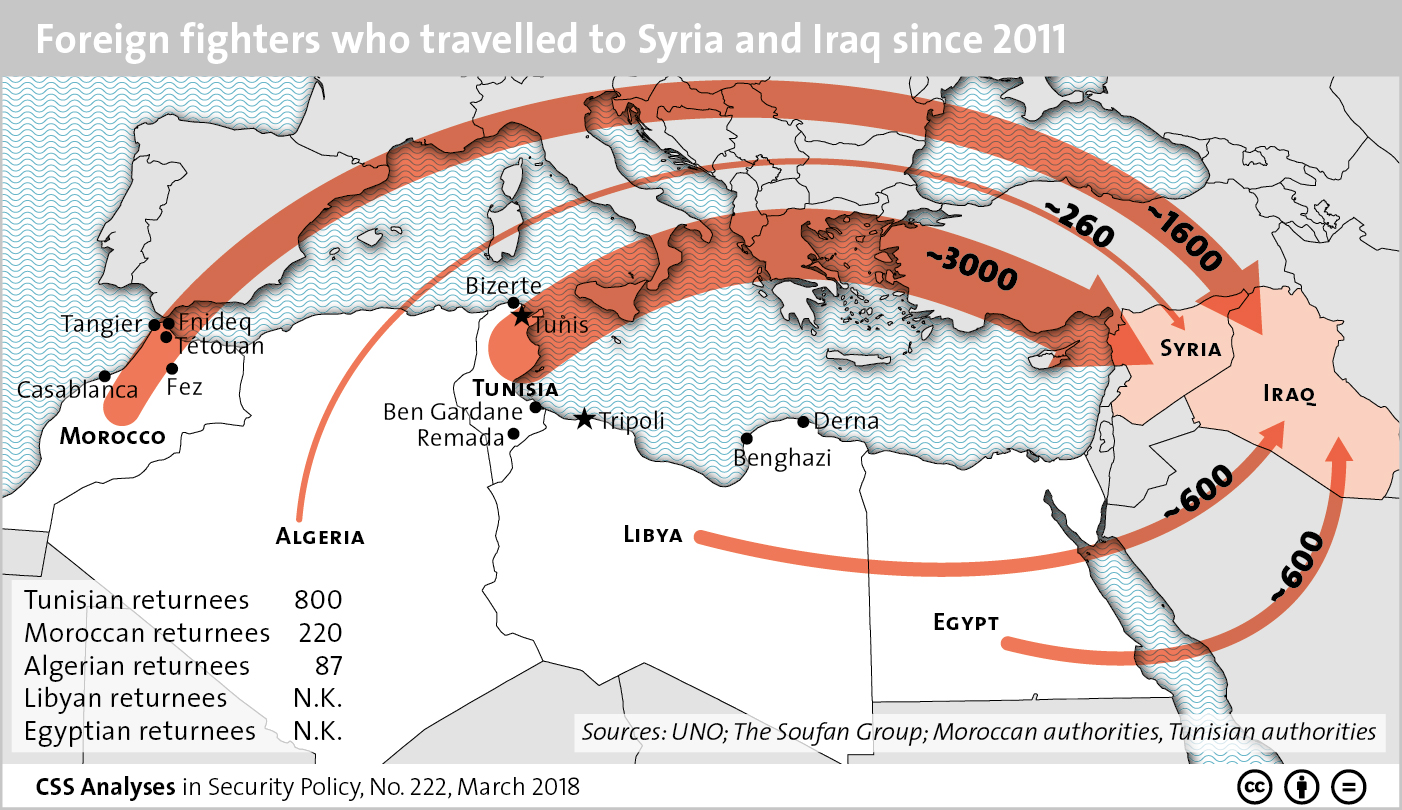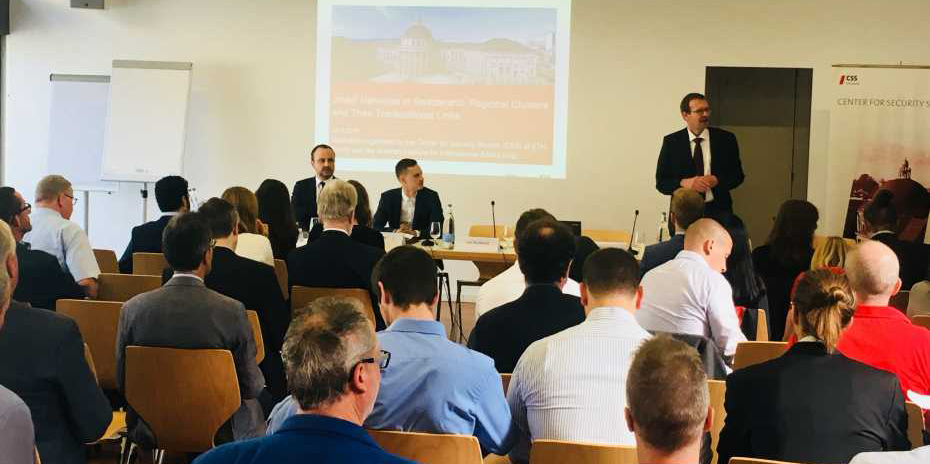On 25 May 2018, the Center for Security Studies at ETH Zurich, together with the Austrian Institute for International Affairs (oiip) and the University of Lucerne, hosted a conference on “Jihadi Networks in Switzerland: Regional Clusters and Transnational Links”. Experts from academia and politics discussed the similarities, differences and connections of jihadist networks in Switzerland, Austria, Germany, France, Belgium, Italy and the Balkans.
Tag: Foreign Fighters

This graphic traces both the numbers of foreign fighters who traveled to Syria and Iraq from North African countries, as well as those who have returned to their country of origin or residence since 2011. To find out more about North Africa’s foreign fighters, see Lisa Watanabe’s recent addition to our CSS Analyses in Security Policy series here. For more graphics on peace and conflict, see the CSS’ collection of graphs and charts on the subject here.

This article was originally published by Political Violence @ a Glance on 15 June 2017.
More than 30,000 foreign fighters from 100 countries have entered ongoing conflicts in Syria and Iraq since 2011. While the flow of these fighters has decreased dramatically over the past twelve months, two important concerns remain regarding foreign fighters. First, foreign fighters could radicalize rebel groups causing an escalation of violence in conflicts, lengthening their duration, and/or reducing opportunities for their resolution. Second, upon the conclusion of their participation in foreign conflicts, these fighters could try to return to their home countries and carry out deadly attacks. In two articles at Research & Politics and Journal of Conflict Resolution, we suggest that both of these concerns are easily exaggerated.
Previous studies present divided evidence as to whether foreign fighters aid or undermine the rebels that they join. On the one hand, data summarizing foreign fighter participation across the period 1900 to 2006 suggest that conflicts involving foreign fighters were more likely, on average, to conclude with insurgent victory than with government victory. On the other hand, in Chechnya, the arrival of foreign fighters perverted the goals of local rebels, negatively affecting their resource and recruitment bases and losing them support within local populations.

This article was originally published by the Institute for the Study of War (ISW) on 9 November 2016.
ISIS has organized a number of external attacks worldwide in the past year, some of which have been thwarted. ISIS’s global network is still operating and is poised to continue conducting external attacks in late 2016. The U.S. must recognize that the campaign to recapture Mosul and Raqqa will not defeat ISIS. Rather, any military success in Iraq and Syria must be the first phase of a campaign to counter ISIS globally, whether through military or non-military means.
Overview
ISIS has been planning an external attack from Raqqa, Syria. The U.S. and its partners in the counter-ISIS coalition are assisting the major operations to recover Raqqa and Mosul, ISIS’s main urban hubs. ISIS is conducting counter-offensives inside Iraq to divert Coalition attention from these main efforts. Similarly, ISIS will direct its global network to launch additional counter-offensives across its global footprint. Coalition partner nations face a high risk of attacks by ISIS on their homelands and their populations abroad while the offensives to recapture Mosul and Raqqa progress. The attack threat emanating from Raqqa highlights that ISIS-linked militants across the world still receive direction from ISIS in core terrain.
The Coming of the Russian Jihad: Part 1

This article was originally published by War on the Rocks on 23 September 2016.
On June 28, three suicide bombers entered the Ataturk Airport in Istanbul, where they killed 45 people and injured 229. Although only one of the terrorist was from Russia (the other two were Uzbek and Kyrgyz), it is almost certain that that their last words to one another were in Russian. It is estimated that between 5,000 to 7,000 Russian-speaking jihadists have made Russian the second most popular language of ISIL, after Arabic.
The Changing Demographics
That Russian should be the lingua franca of jihadists from the former Soviet territory is surprising. Many, perhaps most, younger Kyrgyz, Tajiks, and Uzbeks (judging by the gastarbeiters from Tajikistan, Uzbekistan, and Kyrgyzstan) do not know Russian well or even at all. That Russia is becoming widely-spoken is indicative of the explosive internationalization and the vastly expanded recruitment patterns of what might be called the Russian Jihad based in Russia and former Soviet Central Asia.
With an estimated 2,400 of its citizens fighting with ISIL, Russia is surpassed only by Tunisia and Saudi Arabia in the number of its nationals in the extremist group’s ranks. It is far ahead of the top four European suppliers of ISIL soldiers: France with 1,800 fighters, Britain and Germany with 760 each, and Belgium with 470. Russian language graffiti has been spotted in Darayya, Syria (“We will pray in your palace, Putin! Tatars and Chechens, rise up!”), and there is an Univermag grocery store in the “Russian” district of ISIL’s de-facto capital of Raqqa, alongside Russian-language schools and kindergartens.




